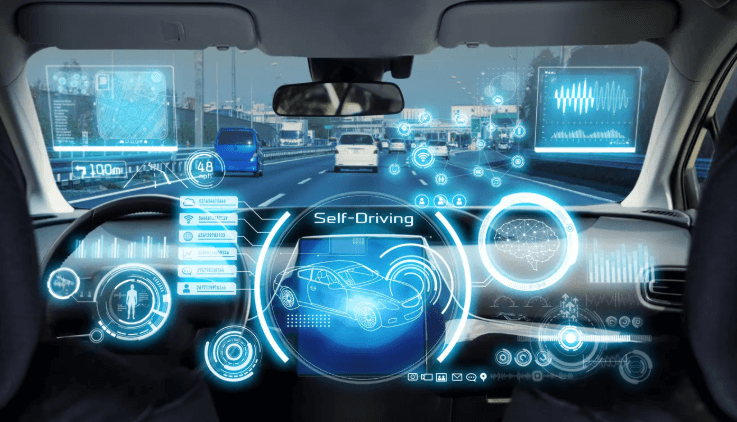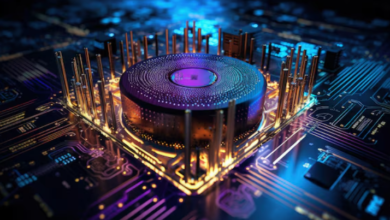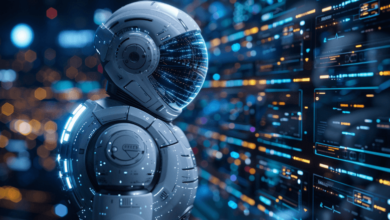Autonomous Systems: Drones, Robots, and Self-Driving Cars

Introduction
Autonomous systems are revolutionizing the way we live and work. From drones soaring in the skies to robots assisting in various industries and self-driving cars transforming transportation, these technologies are reshaping the modern world. Autonomous systems operate independently, using advanced sensors, machine learning algorithms, and artificial intelligence (AI) to perform tasks with minimal human intervention. This article delves into the development, functionality, applications, and potential future of autonomous systems, focusing on drones, robots, and self-driving cars.
What Are Autonomous Systems?
Autonomous systems refer to machines or devices capable of operating without direct human control. They use a combination of sensors, software, and decision-making algorithms to perceive their environment, process information, and execute tasks. These systems rely heavily on advancements in AI, robotics, and machine learning to achieve high levels of autonomy and efficiency.
The Evolution of Autonomous Systems
The journey of autonomous systems began decades ago, driven by the desire to automate repetitive tasks and enhance precision. Early robotic arms were introduced in manufacturing in the mid-20th century. With the advent of AI, the capabilities of autonomous systems expanded exponentially, enabling the creation of drones for aerial operations and self-driving cars for automated transportation.
Drones: Autonomous Flyers
Drones, also known as unmanned aerial vehicles (UAVs), are among the most recognizable autonomous systems. Initially developed for military applications, drones are now used across industries, including logistics, agriculture, photography, and surveillance.
Drones operate using GPS, sensors, and cameras to navigate and perform tasks. Advanced models incorporate AI to recognize objects, avoid obstacles, and adapt to changing environments. Companies like Amazon and Zipline have pioneered drone-based delivery systems, while farmers use drones to monitor crops, spray pesticides, and analyze soil health.
The use of drones extends to disaster management, where they assist in search and rescue missions, assess damage, and provide real-time data to responders. Their ability to access hard-to-reach areas makes them invaluable in these scenarios.
Robots: Beyond Human Capabilities
Robots have evolved far beyond the mechanical arms of assembly lines. Today, autonomous robots are deployed in healthcare, logistics, retail, and domestic settings. Equipped with AI and sensors, these robots can perform tasks like cleaning, inventory management, and assisting in surgeries.
Healthcare robots, such as da Vinci Surgical System, enable minimally invasive procedures with precision. Service robots like Pepper and Spot offer interactive experiences and can assist in public spaces or homes. In warehouses, autonomous mobile robots (AMRs) by companies like Boston Dynamics and KUKA streamline logistics by moving goods efficiently.
Robots also play a critical role in hazardous environments, such as mines or nuclear facilities, where human intervention would be risky. Their versatility and adaptability make them essential tools in advancing industries and improving safety.
Self-Driving Cars: Autonomous Transportation
Self-driving cars, also known as autonomous vehicles, are set to revolutionize transportation. Using an array of sensors, cameras, and LiDAR (Light Detection and Ranging), these vehicles can navigate roads, detect obstacles, and make driving decisions without human input.
Companies like Tesla, Waymo, and Cruise are leading the development of self-driving technology. These vehicles promise to reduce accidents caused by human error, improve traffic flow, and make transportation more accessible. Autonomous taxis and delivery vehicles are already being tested in cities worldwide, indicating the growing viability of this technology.
However, self-driving cars face challenges such as ethical dilemmas, legal frameworks, and public acceptance. Ensuring their safety and reliability remains a priority for developers and regulators alike.
Key Technologies Powering Autonomous Systems
Several technologies drive the capabilities of autonomous systems:
- Artificial Intelligence (AI): Enables machines to learn, adapt, and make decisions.
- Machine Learning: Provides systems the ability to improve performance based on data analysis.
- Sensors and Cameras: Allow systems to perceive their environment and react accordingly.
- Connectivity: Facilitates communication between systems, such as vehicle-to-vehicle (V2V) communication.
- Cloud Computing: Supports real-time data processing and storage.
Applications Across Industries
Autonomous systems have applications in nearly every sector:
- Agriculture: Drones and robots optimize farming practices, monitor crops, and automate harvesting.
- Logistics: Autonomous vehicles and robots streamline supply chains, reducing costs and delivery times.
- Healthcare: Robots assist in surgeries, diagnostics, and elderly care.
- Construction: Autonomous equipment enhances efficiency and precision in building projects.
- Public Safety: Drones provide surveillance and support during emergencies.
Challenges and Ethical Considerations
Despite their promise, autonomous systems face challenges:
- Safety and Reliability: Ensuring systems can handle unexpected situations is critical.
- Ethical Dilemmas: Decisions made by AI, such as during accidents, raise ethical questions.
- Data Privacy: Autonomous systems collect vast amounts of data, necessitating strict privacy measures.
- Cost: High development and deployment costs can limit accessibility.
The Future of Autonomous Systems
The future of autonomous systems is boundless. Innovations like swarm robotics, where multiple robots collaborate, and advanced AI integration will expand their capabilities. Autonomous vehicles may lead to smart cities with optimized traffic and energy usage. Drones could become integral to urban logistics, delivering goods efficiently. Additionally, autonomous systems may play a key role in space exploration, mining, and disaster response.
How to Prepare for an Autonomous Future
As autonomous systems become more prevalent, individuals and industries should focus on upskilling and adapting. Understanding the basics of AI and robotics can open opportunities in this evolving field. Policymakers and businesses must work together to address regulatory, ethical, and societal impacts, ensuring these systems benefit humanity.
Conclusion
Autonomous systems, encompassing drones, robots, and self-driving cars, are shaping the future with their ability to transform industries and improve quality of life. While challenges exist, their potential to drive efficiency, safety, and innovation is undeniable. By embracing these technologies responsibly, we can pave the way for a future where autonomous systems become an integral part of our daily lives.




